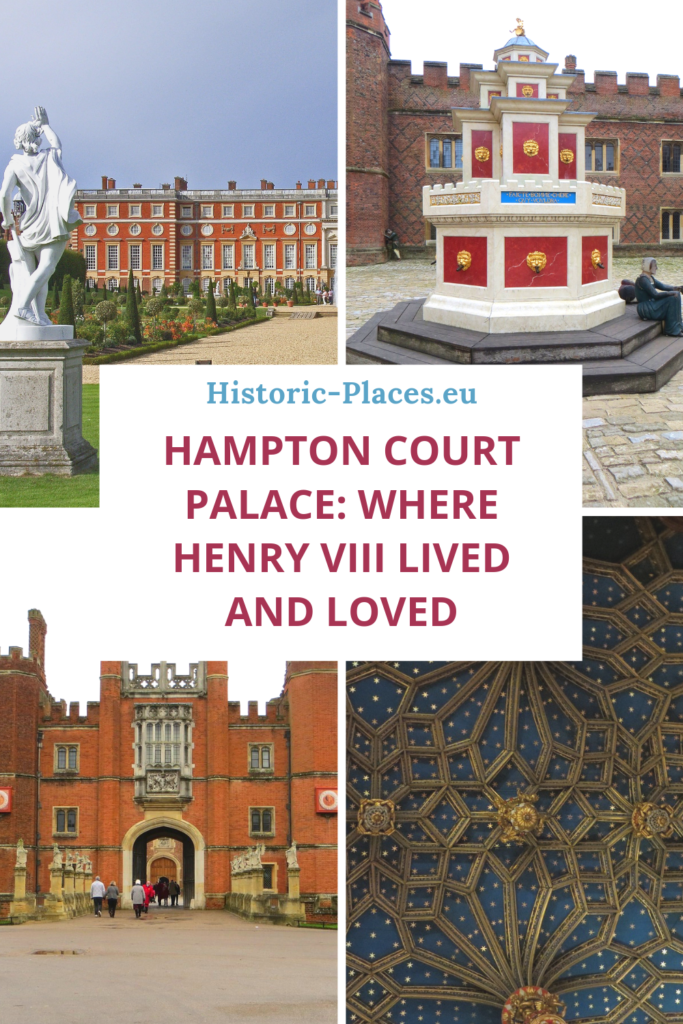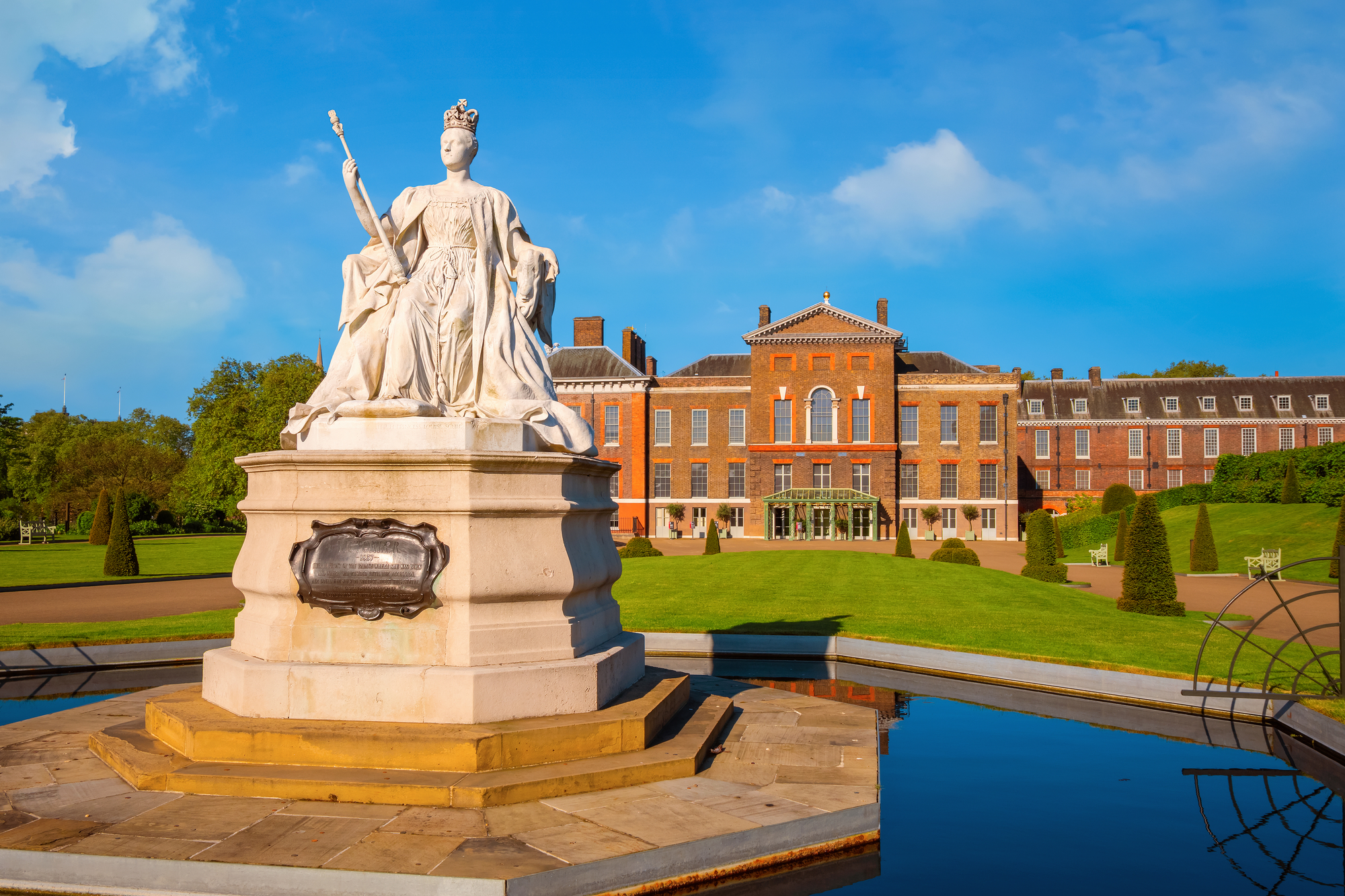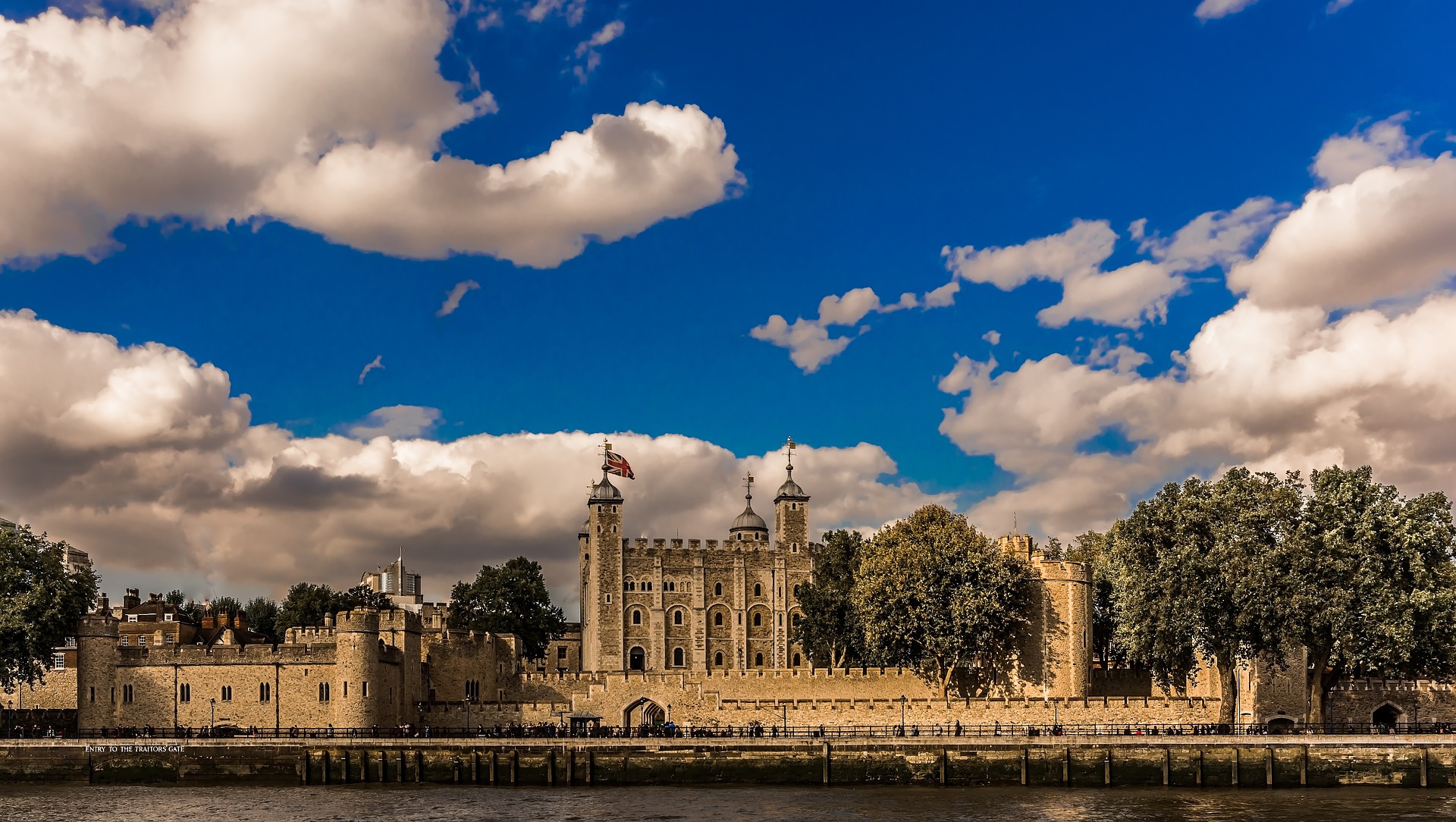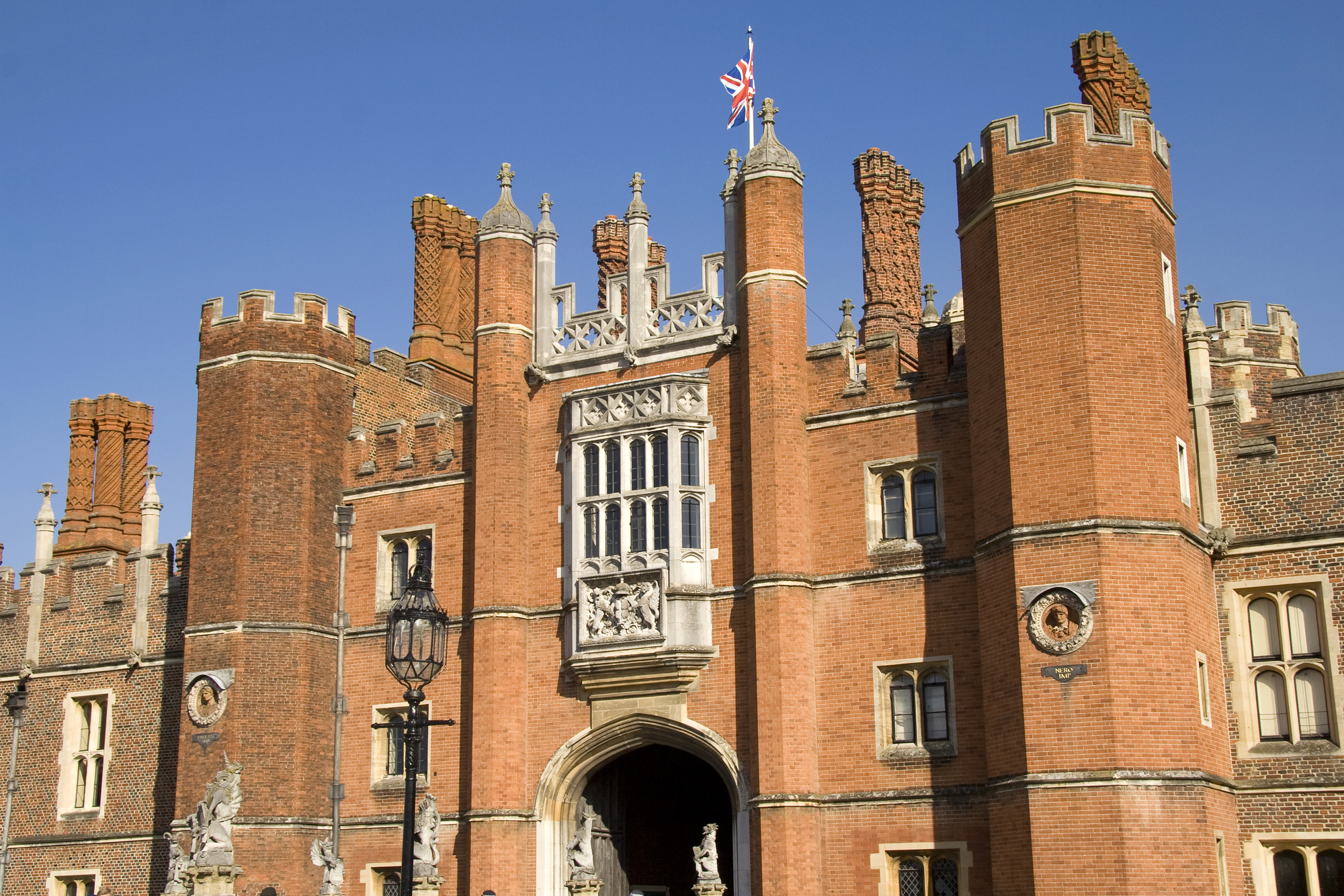
Hampton Court – the royal palace on the Thames. Home to many English monarchs over the centuries, Hampton Court is most closely associated with the legendary Tudor King Henry VIII and his six wives.
Hampton Court Palace: History
Hampton Court Palace is located on the banks of the Thames, southwest of London and about half an hour’s train ride away. The palace was originally the beloved property of Thomas Wolsey, Archbishop of York and Lord Chancellor of Henry VIII. But when Wolsey was unable to obtain papal approval for Henry’s divorce from his first wife, Katherine of Aragon, his star began to sink. It had long been noticeable that the splendour and luxury of Hampton Court could compete with the king’s court. During a stay in the palace, Henry is said to have asked Wolsey what would cause a subject to build a palace worthy of a king. To which Wolsey is said to have replied, certainly with a great deal of desperation: To make this palace a gift to the king. Unfortunately, even this generous present did not stop Wolsey’s fall, and he died two years later on the way to the Tower of London.
Henry took possession of the palace and made extensive extensions to accommodate his court, which comprised over 1000 people. According to today’s value, he invested about 18 million pounds in the extension, whereby, among other things, the already large kitchens were quadrupled. The palace also played an important role for his descendants, and Hampton Court remained a centre of English court life for more than a century.
But when the royal couple Mary II and William III were in power at the end of the 17th century, Hampton Court and its Tudor style were considered hopelessly old-fashioned. The baroque style of Versailles was en vogue, so what happened? Under Christopher Wren, the architect of the new St. Paul’s Cathedral, parts of Hampton Court were demolished and rebuilt in a modern style. To this day, the palace presents two completely different faces: the red brick front in Tudor style in the west, the pompously geometric Baroque front in the south. The different buildings even meet abruptly, wall to wall. Originally it had been planned to demolish and rebuild the entire palace with the exception of the large hall. Fortunately for us, there was a lack of time and money.
Places of interest
Unfortunately the private rooms of Henry VIII came to an end under Wren, but some of the sensational Tudor rooms can still be admired today.
In the 32 m long Great Hall the court dined and celebrated during Henry’s reign. To this day, the hall still has large, gold-worked tapestries, which in the 16th century were as expensive as a battleship – per piece.
Next to the door of the hall there is a rare detail in a wood carving: the intricate initials of Heinrich and his second wife Anne Boleyn. After Anne’s execution, these escaped destruction or reworking into the initials of the third wife.
Behind the hall is the Great Watching Chamber, which once provided access to Heinrich’s private chambers. Here you can still find a genuine Tudor ceiling decoration with the coat of arms of the aforementioned third wife, Jane Seymour.
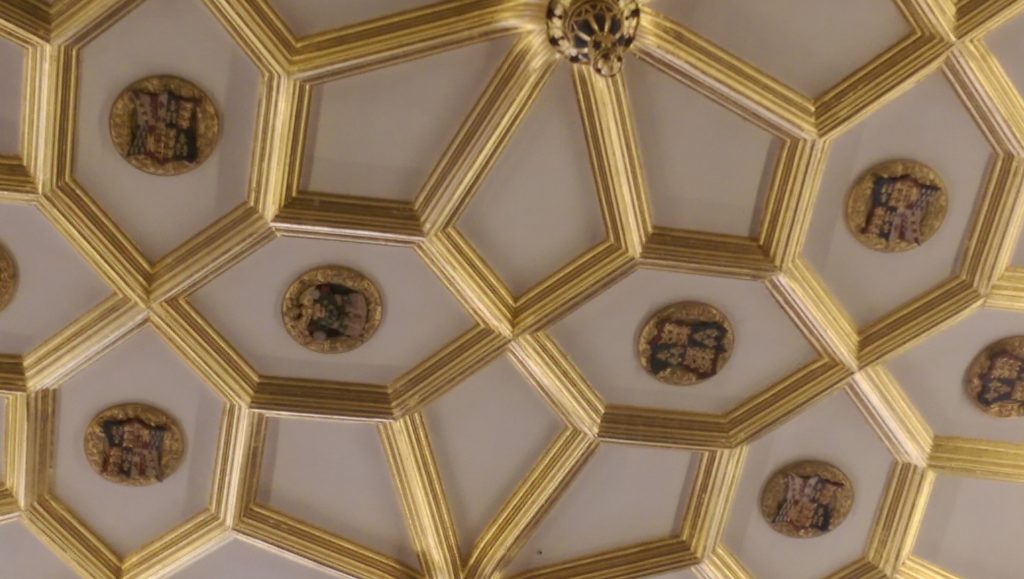
The royal chapel also survived, and the gallery before it is still called the Haunted Gallery. Here Katherine Howard, the fifth wife of Henry VIII, escaped the guards who were to detain her. She ran to the chapel where her husband prayed. She wanted to go to him to beg for her life. But at the door of the chapel the guards caught her and dragged her away. Heinrich continued to pray calmly. Since then it is said you can hear her screams on the gallery. Jane Seymour, Anne Boleyn and the nanny Sybil Penn are also said to haunt the palace.
In the “new” part of the palace you can visit royal apartments from the 17th and 18th centuries. The palace’s 24-hectare gardens also date from the 17th century. Here you will find The Great Vine, the largest vine in the world, and the famous maze of Hampton Court.
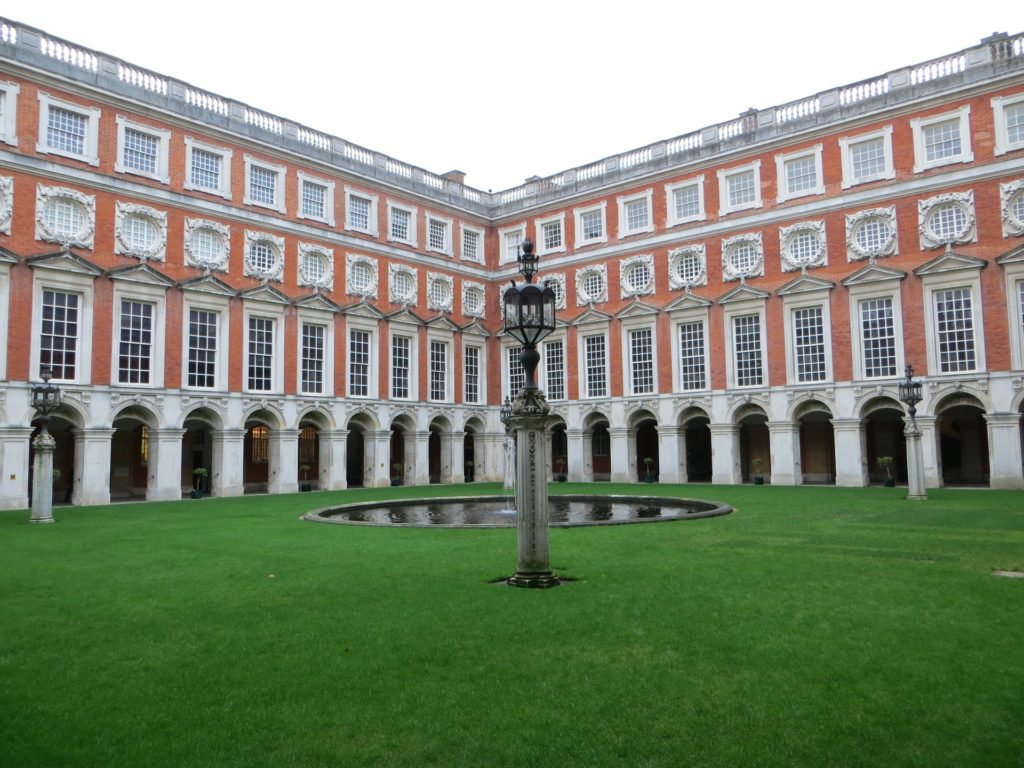
Why visit Hampton Court Palace?
Hampton Court is one of the places where one of the most interesting chapters in English history is most alive.
Historic Royal Palaces, the organisation that oversees Hampton Court, takes great pains to bring the palace’s history to life. The costumed guides alternate roles from different eras of the palace’s history and resurrect the court of the Tudor, Stuart or Georgian periods. Even the visitors can dress in capes of that time as they explore Hampton Court. And it is not just guided tours that take place, but parts of the court’s life are performed. You listen to the latest court gossip, take part in the King’s Council or have an audience with the king. Or you can see the king or queen being dressed for the day or going to bed in the evening.
Historical cooking demonstrations take place in the kitchens that once hosted Henry’s court. At Christmas time, the festivities of the Tudor period are recreated. Between 27.12. and New Year, visitors can experience how Christmas was celebrated at the court of the great king. And of course they must not be missing in a palace with such dramatic history: The Ghost Tours, on the traces of supernatural phenomena in the palace at night.
Your visit to Hampton Court Palace
Address:
Hampton Court Palace, East Molesey, Surrey. KT8 9AU
Opening hours:
Hampton Court Palace is open daily except 24 – 26 December.
In summer (25.03. – 27.10.) the Palace is open during these hours:
Daily 10:00-18:00
Last entry 17:00
Last entry to the Magic Garden and Maze 17:15
In winter (28.10. – 30.03.) you can visit the palace at these times:
Daily 10:00-16:30
Last entry 15:30
Last entry to Maze 15:45
Arrival:
The easiest way to get to Hampton Court is by train. There is a train every 30 minutes from London Waterloo station, the journey takes about half an hour. Hampton Court Station is a five minute walk from the palace.
If you want to travel by car, you can follow the following routes:
From the M25: Exit 10 (onto the A307) or exit 12 (onto the A308).
From the A3: Take the A309.
The palace is located on the A308 and is signposted extensively.
Entrance fee:
You will get the best prices if you buy your tickets online and print them out at home. This saves you waiting in line at the ticket office. With these tickets you can pass the cash desk and go directly to the entrance to the palace.
Pin for later:
